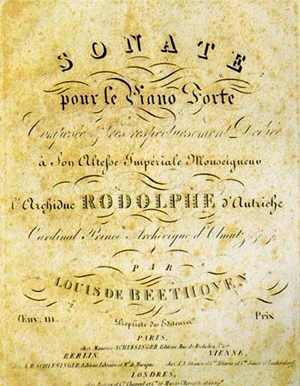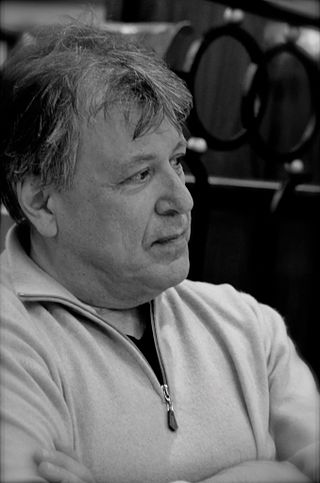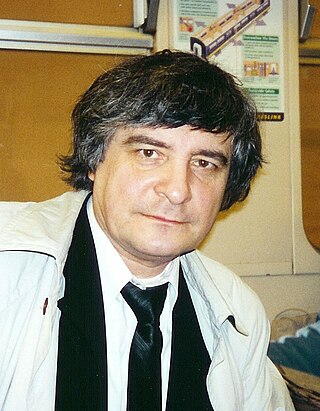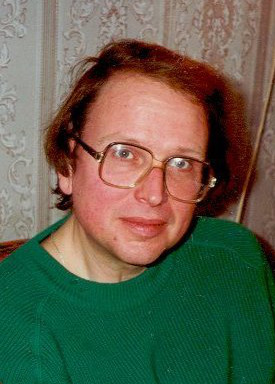Dmitri Shostakovich's String Quartet No. 8 in C minor, Op. 110, was written in three days.

Sergei Rachmaninoff's Piano Concerto No. 3 in D minor, Op. 30, was composed in the summer of 1909. The piece was premiered on November 28 of that year in New York City with the composer as soloist, accompanied by the New York Symphony Society under Walter Damrosch. The work has the reputation of being one of the most technically challenging piano concertos in the standard classical piano repertoire.
The Symphony No. 8 in C minor, Op. 65, by Dmitri Shostakovich was written in the summer of 1943, and first performed on 4 November of that year by the USSR Symphony Orchestra under Yevgeny Mravinsky, to whom the work is dedicated. It briefly was nicknamed the "Stalingrad Symphony" following the first performance outside the Soviet Union in 1944.
The Violin Concerto No. 1 in A minor, Op. 77, was originally composed by Dmitri Shostakovich in 1947–48. He was still working on the piece at the time of the Zhdanov Doctrine, and it could not be performed in the period following the composer's denunciation. In the time between the work's initial completion and the first performance, the composer, sometimes with the collaboration of its dedicatee, David Oistrakh, worked on several revisions. The concerto was finally premiered by the Leningrad Philharmonic under Yevgeny Mravinsky on 29 October 1955. It was well-received, Oistrakh remarking on the "depth of its artistic content" and describing the violin part as a "pithy 'Shakespearian' role."
The Violin Concerto No. 2 in C-sharp minor, Op. 129, was Dmitri Shostakovich's last concerto. He wrote it in the spring of 1967 and intended it to serve as a 60th birthday present for its dedicatee, David Oistrakh, in September. However, Shostakovich had mistaken Oistrakh's age; he actually turned 59 that year. It was premiered unofficially in Bolshevo, near Moscow, on 13 September 1967, and officially on 26 September by Oistrakh and the Moscow Philharmonic under Kirill Kondrashin in Moscow.

The Piano Sonata No. 32 in C minor, Op. 111, is the last of Ludwig van Beethoven's piano sonatas. The work was written between 1821 and 1822. Like other late period sonatas, it contains fugal elements. It was dedicated to his friend, pupil, and patron, Archduke Rudolf.

Nikolai Yakovlevich Myaskovsky, was a Russian and Soviet composer. He is sometimes referred to as the "Father of the Soviet Symphony". Myaskovsky was awarded the Stalin Prize five times.
Sergei Prokofiev began his Violin Concerto No. 1 in D major, Op. 19, as a concertino in 1915 but soon abandoned it to work on his opera The Gambler. He returned to the concerto in the summer of 1917. It was premiered on October 18, 1923 at the Paris Opera with Marcel Darrieux playing the violin part and the Paris Opera Orchestra conducted by Serge Koussevitzky. Igor Stravinsky made his debut as conductor at the same concert, conducting the first performance of his own Octet for Wind Instruments.
Piano Concerto No. 3 in C major, Op. 26, is a piano concerto by Sergei Prokofiev. It was completed in 1921 using sketches first started in 1913.

Andrei Gavrilov is a Russian-Swiss pianist.
Sergei Prokofiev's Violin Sonata No. 2 in D Major, Op. 94a, was based on the composer's own Flute Sonata in D, Op. 94, written in 1942 but arranged for violin in 1943 when Prokofiev was living in Perm in the Ural Mountains, a remote shelter for Soviet artists during the Second World War. Prokofiev transformed the work into a violin sonata at the prompting of his close friend, the violinist David Oistrakh. It was premiered on 17 June 1944 by David Oistrakh and Lev Oborin.

The Piano Trio No. 2 in E minor, Op. 67, is a piece for violin, cello and piano by the Russian composer Dmitri Shostakovich, started in late 1943 and completed in August the following year. It was premiered on 14 November 1944. The piece was dedicated to his close friend Ivan Sollertinsky, whose death in February 1944 affected Shostakovich profoundly.

Dmitri Nikolaevich Smirnov was a Russian-British composer and academic teacher, who also published as Dmitri N. Smirnov and D. Smirnov-Sadovsky. He wrote operas, symphonies, string quartets and other chamber music, and vocal music from song to oratorio. Many of his works were inspired by the art of William Blake.
DSCH is a musical motif used by the composer Dmitri Shostakovich to represent himself. It is a musical cryptogram in the manner of the BACH motif, consisting of the notes D, E-flat, C, B natural, or in German musical notation D, Es, C, H, thus standing for the composer's initials in German transliteration: D. Sch..
The Concerto in C minor for Piano, Trumpet, and String Orchestra, Op. 35, was completed by Dmitri Shostakovich in 1933.

The Cello Sonata in D minor, Op. 40, was composed in 1934 by Dmitri Shostakovich. It was also a period of emotional turmoil in his life, as he had fallen in love with a young student at a Leningrad festival featuring his Lady Macbeth of Mtsensk District. Their affair resulted in a brief separation from his wife Nina; he composed the Cello Sonata during this period. He completed it within a few weeks and gave its premiere in Moscow on 25 December with his close friend, the cellist Viktor Kubatsky, who was also the piece's dedicatee. By late 1934 Shostakovich and Nina reunited and she eventually became pregnant with their first-born daughter, who was born in 1936.

The Piano Sonata No. 2 in B minor, Op. 61 by Dmitri Shostakovich, the last of his piano sonatas, was composed in early 1943. It was his first solo piano composition since 1933, as well as his second attempt at composing a piano sonata in the key of B minor.

Alexander Ivashkin, was a Russian cellist, writer, academic and conductor. He was a professor of music and the Chair of Performance Studies at Goldsmiths, University of London since 1999, the director of the Centre for Russian Music, and the curator of the Alfred Schnittke Archive. In 1996, he published the first English-language biography of the composer Alfred Schnittke.

Rudolf Borisovich Barshai was a Soviet and Russian conductor and violist.
The Septet for clarinet, bassoon, horn, piano, violin, viola and cello is a Chamber music composition by Igor Stravinsky. It was composed between July 1952 and February 1953, and the first performance took place at Dumbarton Oaks in Washington, D.C., on 23 January 1954. The score is dedicated to the Dumbarton Oaks Research Library and Collection. It consists of three movements, the first lacking a title, and the last lacking a number in the score. The work is influenced by twelve-tone technique, especially by the Wind Quintet, Op. 26, and the Suite for septet, Op. 29, composed by Arnold Schoenberg.









